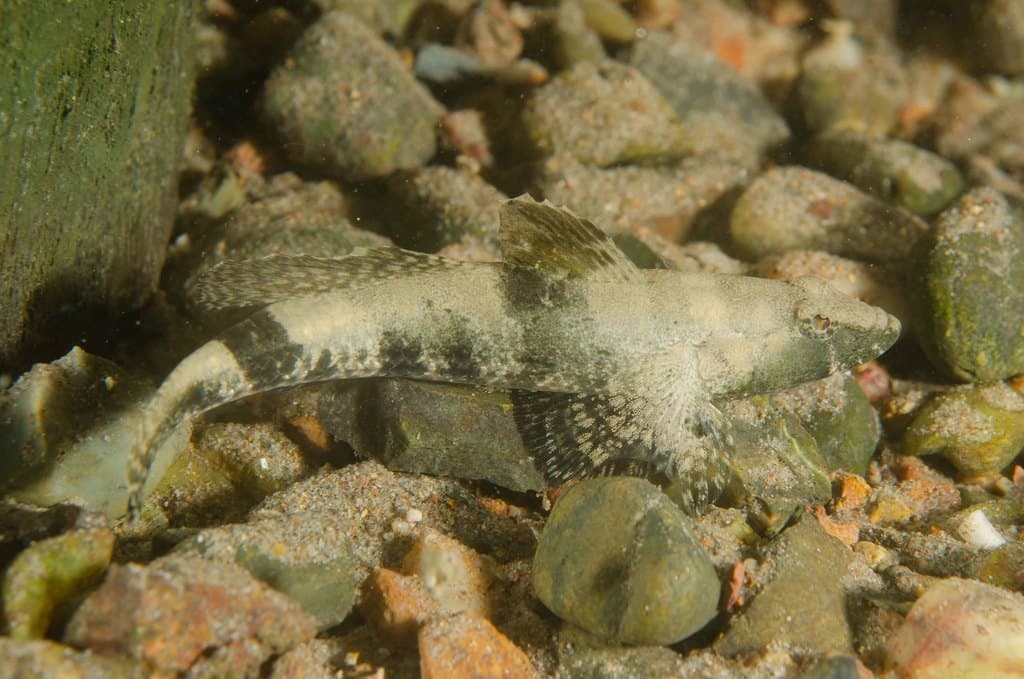Goby (ត្រីខ្សាន) is a small fish species that is used for both consumption and decoration by Cambodian people. The interesting thing about this fish is that they can live in brackish, freshwater, and marine environments. It has a similar appearance to the mudskipper when it comes to the little arm-like fins. In fact, some goby species can even live on the mountains or trees with puddles. You will find 6 common goby species in Cambodia below so feel free to check them out.
Glass Goby (ត្រីខ្សានកែវ)
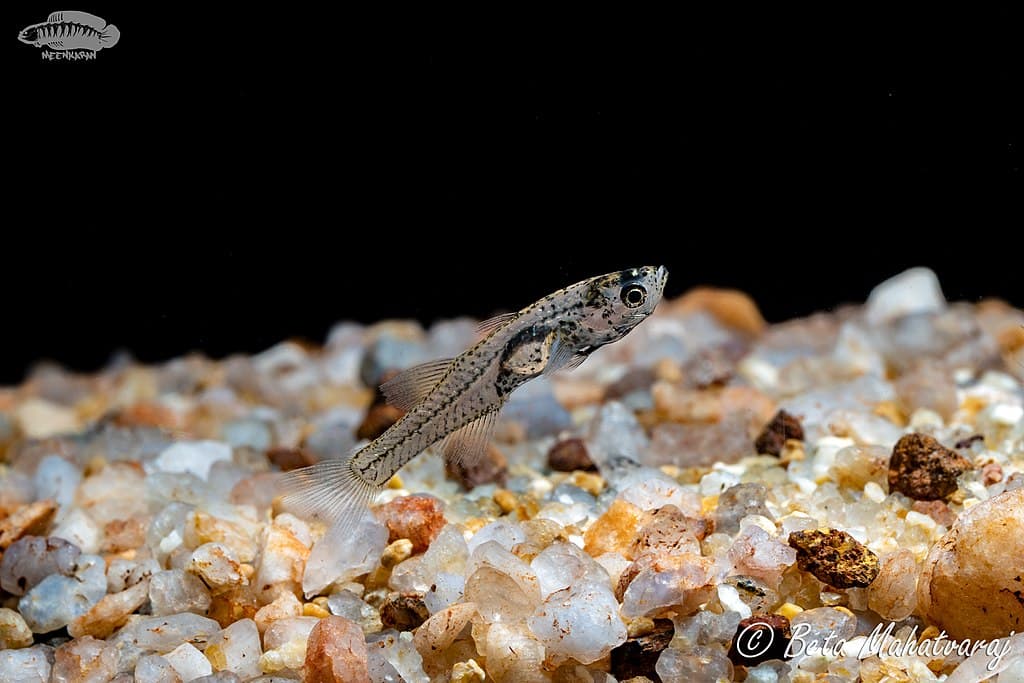
An average glass goby can reach the length of 2 to 4 centimeters with a translucent body and head. There are small scattered black spots on the underside of the head and a series of small black spots along its lower body. It also has a line of melanophores along the side but the transparent body makes it less visible. They are good as tank fish due to their docile and peaceful nature towards other fish in the same space. However, they are not really common in the aquarium hobby because they need a lot of care.
Belongs to the waters of Asia, glass goby has a range from Bangladesh and India all the way to Cambodia and Indonesia. This goby species inhabits lower and slow-moving backwaters, stretches of rivers, and swamps of both brackish and fresh waters. It is also common to see them in coastal bays, estuaries, and inlets, and their main diet is zooplankton. In their brackish water habitats, the glass gobies usually slim close to columns and coral heads of the reef. These tiny fish swim in swarms of a dozen or so, and they are super fast.
Golden Tank Goby (ត្រីខ្សានមាស)
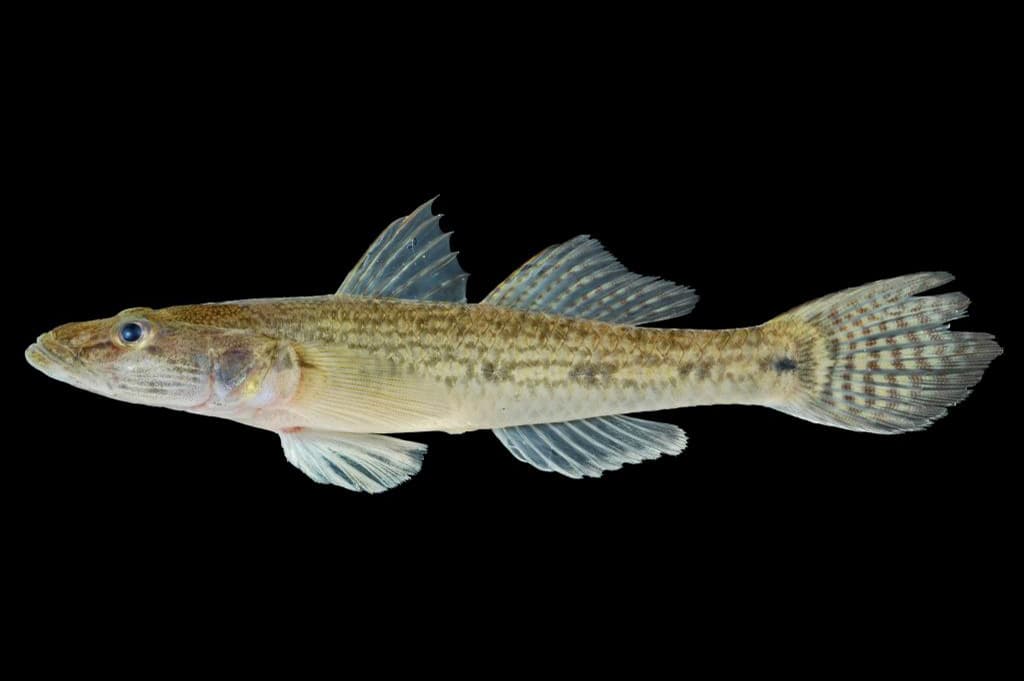
Here we have a large goby species that can reach up to 10 or even 30 centimeters long in some specimens. It has a pale yellowish-brown body with a darker back and 5 dusky blotches along the mid-side. If you look closer, there are also many faint irregular dusky lines and spots on its dorsal. The golden tank goby is quite popular among fish hobbyists due to its stunning golden color. Golden tank gobies are residents of rivers in clear to turbid waters that are over gravel, mud, or sand bottoms. They feed on aquatic insect larvae, prawns, and small fish. Golden tank goby is classified as a Critically Endangered species in Okinawa Prefecture’s red data book. Their main threats are development in the estuaries and riverbank protection.
Linecheek Tank Goby (ត្រីខ្សានលឿង)
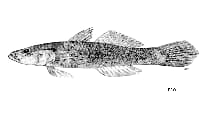
A linecheek tank goby can grow to around 12 centimeters with a slender body and head. While many sources say that this goby species only occurs in the Western Pacific, we also have them in Cambodia. Linecheek tank goby is found in the Mekong Delta where they feed in small crustaceans and fishes. And in their brackish habitats, they live on or near the bottom, feeding on benthic organisms.
Maned Goby (ត្រីខ្សានក្តោង)
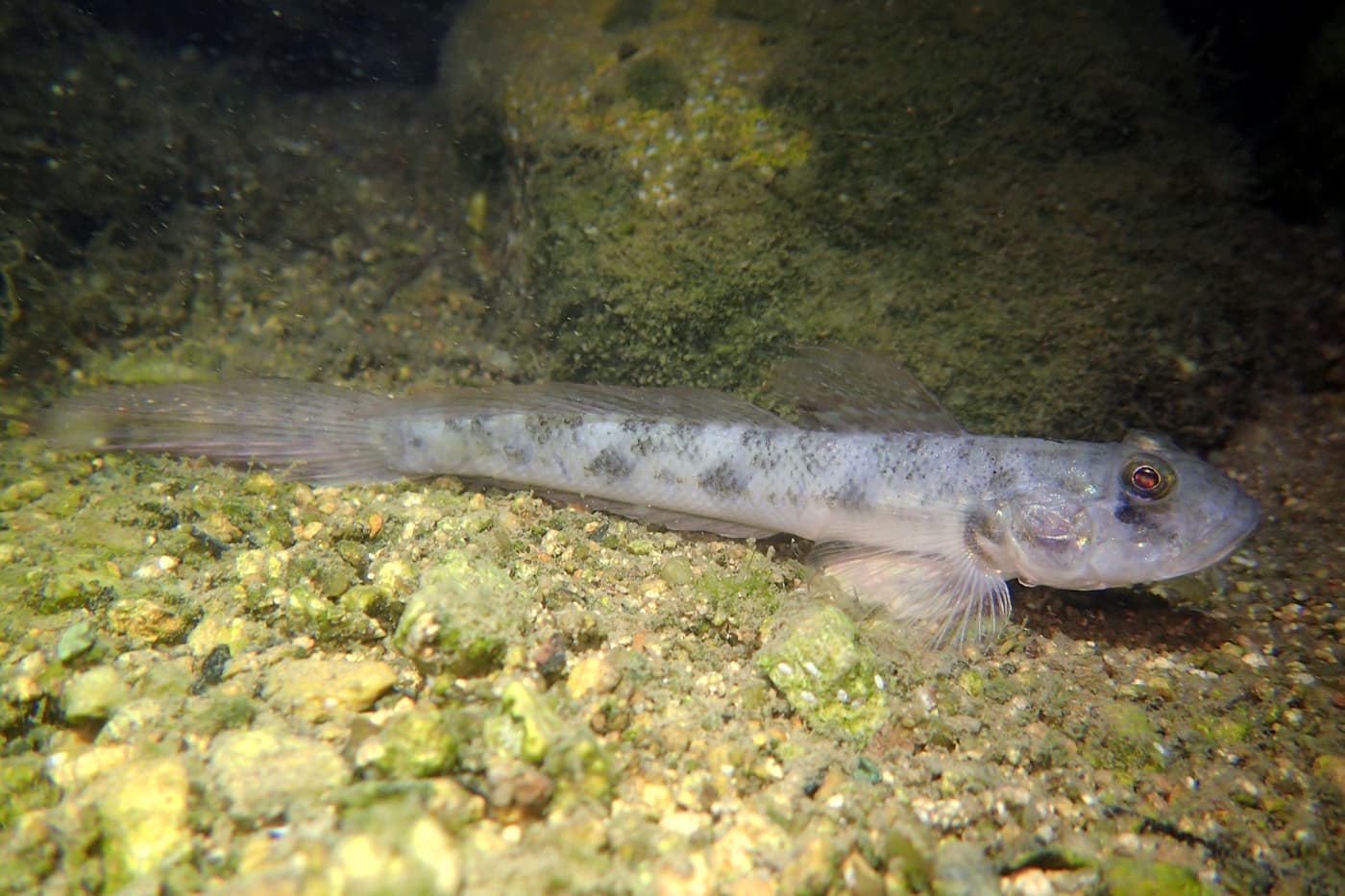
Maned gobies reach 13.5 centimeters long with a compressed and elongated pale-grayish body and a dusky dot on their scales. There are also 5 indistinct dusky blotches along the side with a dusky tear-shaped blotch below each eye. The maned goby inhabits brackish and marine waters along the coast of the Indian Ocean from Africa to the Western Pacific Ocean. In that territory, they live in estuaries and inshore waters at a depth of around 75 centimeters. And, of course, their range is also in the Mekong Delta in the region of Cambodia.
Schooling Bumblebee Goby (ត្រីខ្សានបឹង)
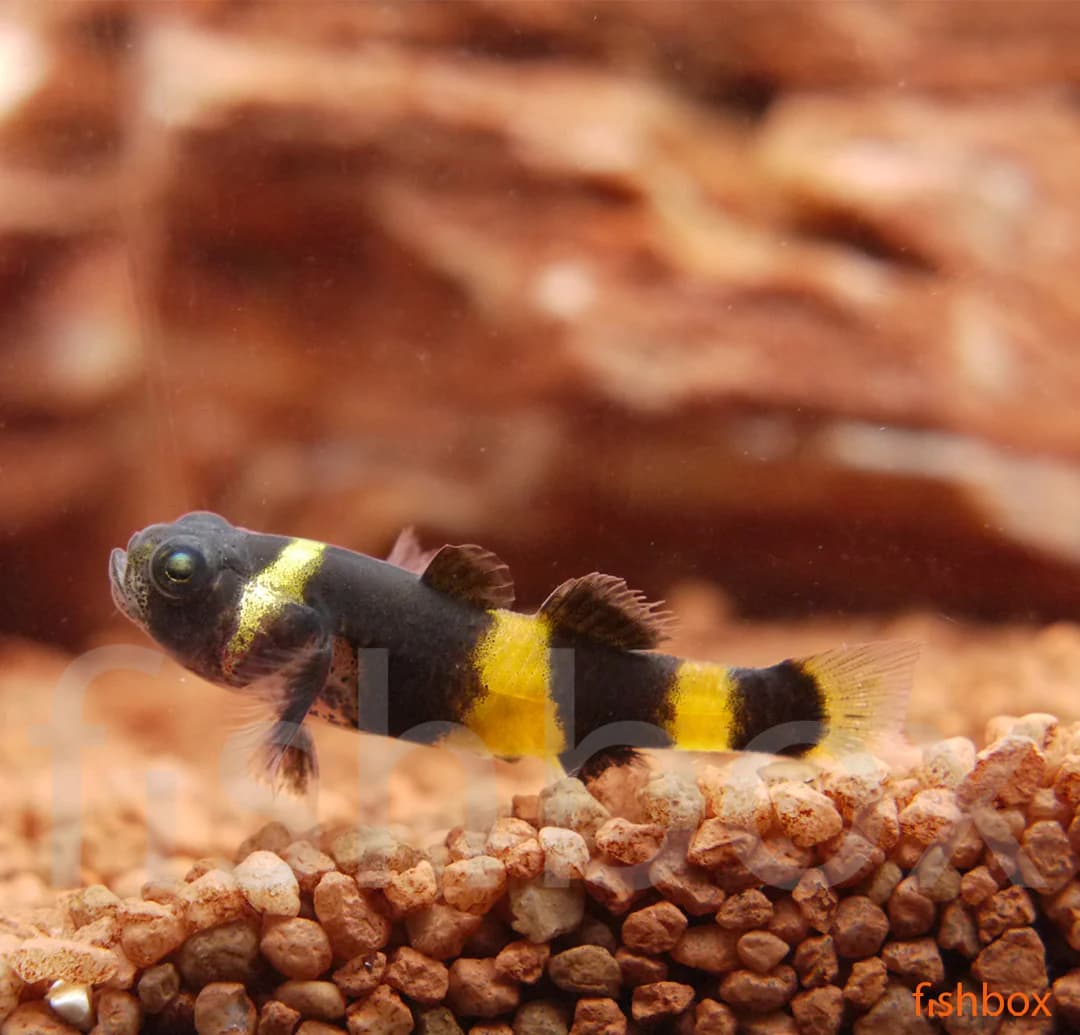
A schooling bumblebee goby grows up to a length of 4.4 centimeters with a black and yellow coloration just like a bumblebee. In our language, we call it “lake goby” due to its habitat in the Mekong waters. Schooling bumblebee gobies live in brackish and freshwater of Southeast Asian countries along the Mekong River to the Philippines. Generally, they inhabit very shallow water of canal ditches, flowing streams, and marshes.
Sleepy Goby (ត្រីខ្សាន)
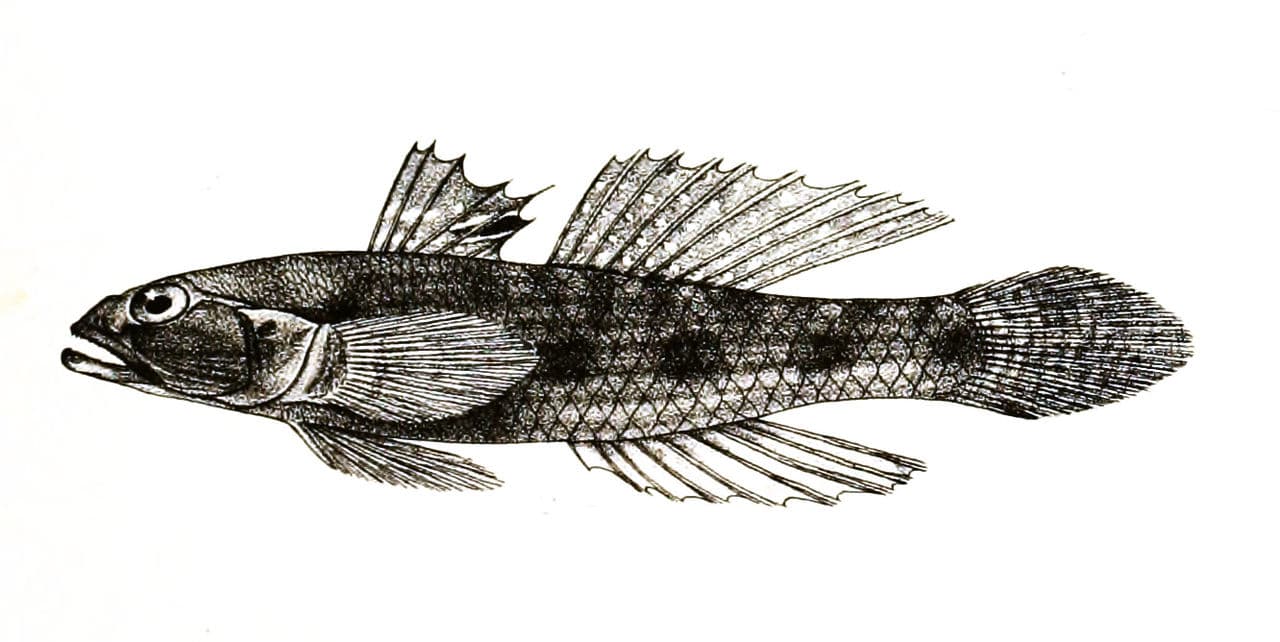
Probably one of the most common goby species, the sleepy goby has a maximum length of 12 centimeters. Its coloration varies from dark brown to blackish with rows of small black spots along its flanks. The fish also has 2-3 dark blotches along its back and upper flanks and a dark band on the first dorsal fin. As a widespread species, its range is across East Africa through the Pacific and the Western Indian Ocean. It occurs in the intertidal zone in coastal rivers, estuaries, and lagoons, often among lower reaches of freshwater streams and mangroves. They like to burrow themselves in the silty-sand substrate and sand in their habitats. When it comes to feeding time, sleepy gobies eat small crustaceans and marine organisms that they can find.
Related Post: Perchlet Species In Cambodia
